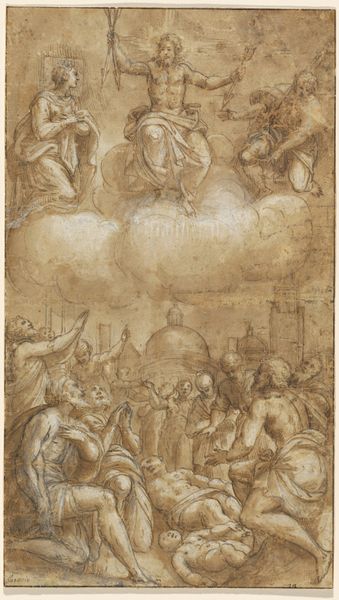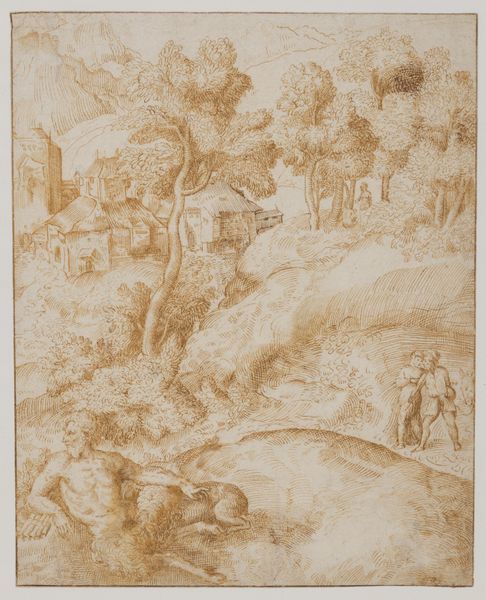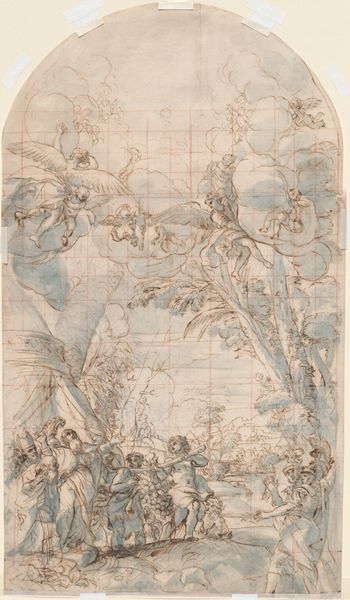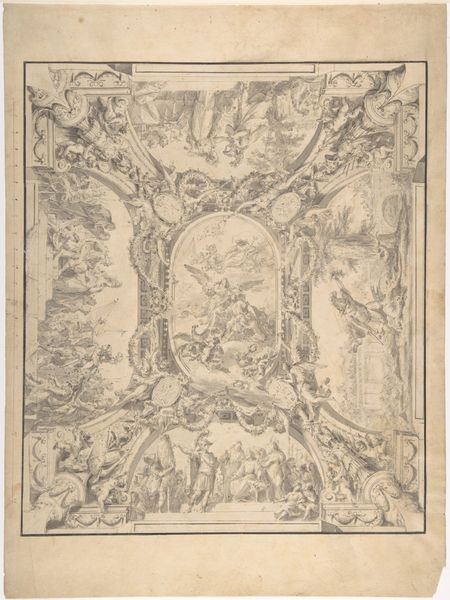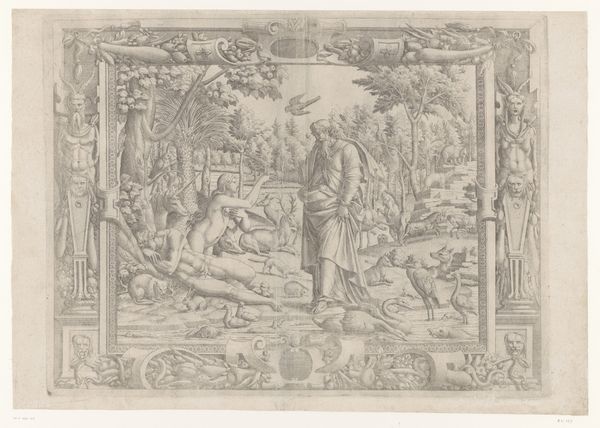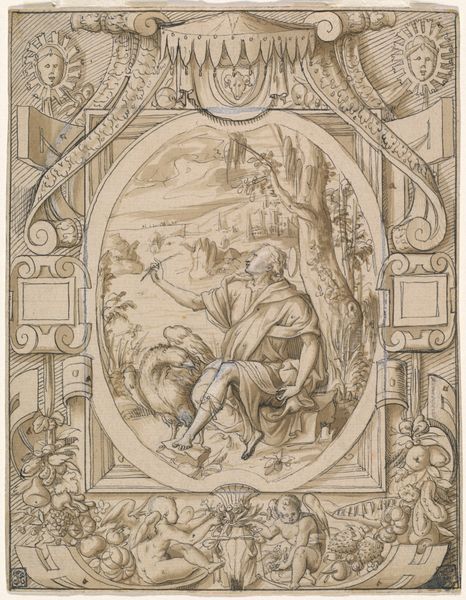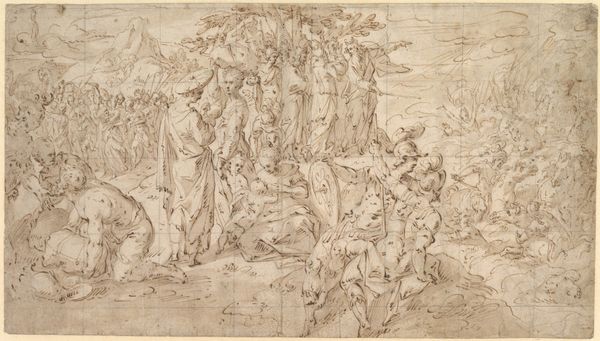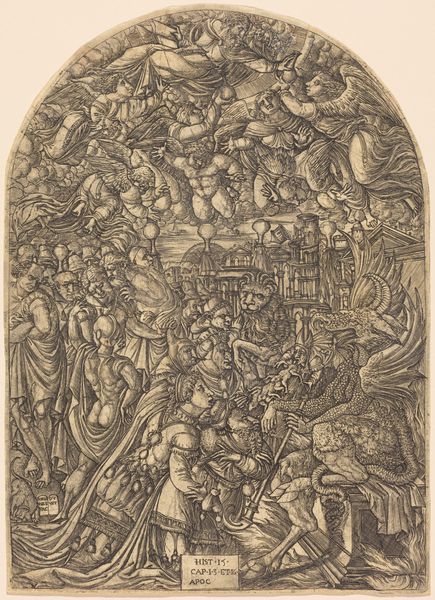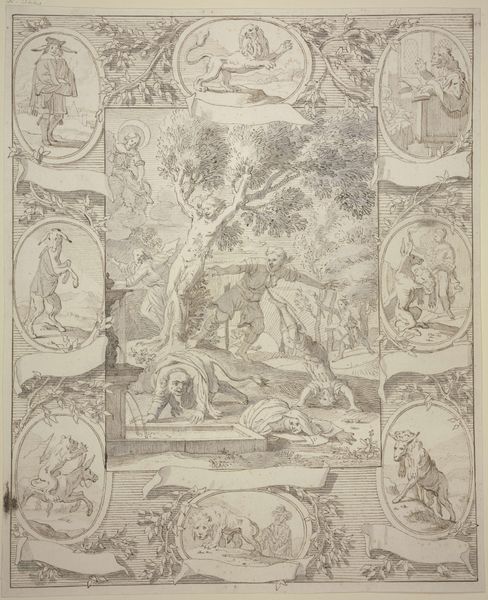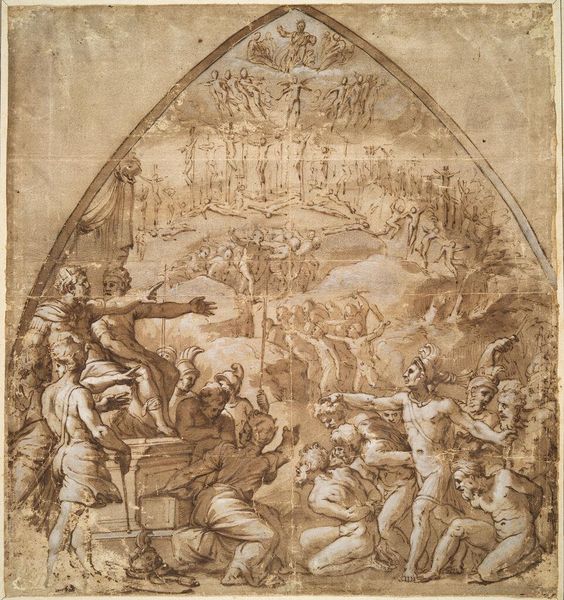
Design for a Stained Glass Window with the Story of Aaron n.d.
0:00
0:00
drawing, print, paper, ink, pen
#
drawing
#
narrative-art
# print
#
charcoal drawing
#
paper
#
ink
#
pen
#
history-painting
#
academic-art
Dimensions: 382 × 262 mm
Copyright: Public Domain
Editor: Here we have "Design for a Stained Glass Window with the Story of Aaron" by Jean Cousin the Younger. It's undated, but the materials are pen and ink with charcoal on paper. It strikes me as incredibly detailed and complex, almost like a graphic novel within a stained-glass format. What stands out to you about this design? Curator: Well, considering the materials, it is fascinating to consider the labor involved in its production. Imagine the hours spent rendering each figure, each architectural detail. Think about the production of the paper itself. Also, let's think about what materials were available to the artist during this time, and where they came from. And the planned function of this design – for a stained glass window. Glass, pigment, and the labor of creating stained glass during the time was a luxury that suggests the affluence of its commissioner. Who would be consuming this? Editor: So you’re highlighting the economic aspects tied to its creation, contrasting the artistry with the materials' value and accessibility? Curator: Precisely. We can ask what narratives of power and social structure are embedded within this stained-glass window's very materials and the process of its making. Are we meant to appreciate the biblical story or perhaps something more? Editor: It’s a new way to see it, considering how the material choices and their historical context add another layer to the narrative being portrayed. Curator: Right. It compels us to investigate the socio-economic forces that shaped its production. That includes challenging any supposed divide between high art and skilled craft. Editor: I never really considered stained glass from that point of view, thank you! It really provides some context. Curator: Absolutely. These sorts of objects encourage an appreciation for materiality and labor which adds dimensions beyond its aesthetic qualities.
Comments
No comments
Be the first to comment and join the conversation on the ultimate creative platform.

